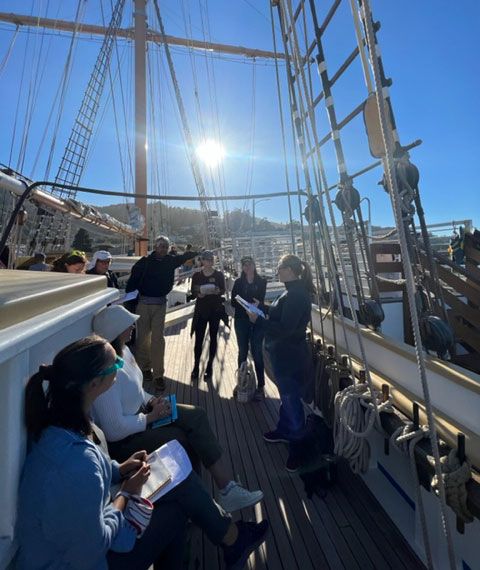NOAA Marine Debris Program Joins Sustainability Leaders on the Water to Discuss Microfiber Pollution
NOV. 7, 2022 — On Oct. 27, NOAA Marine Debris Program staff attended Materevolve’s Textiles x Ocean Connector Sail Event in San Francisco Bay, California. The goal of the event was to bring sustainability leaders together to discuss important topics at the intersection of textiles and ocean.
The event aimed to foster deep connections between attendees and help answer hard questions about textile-derived microfiber pollution, waste, green chemistry, ocean-thoughtful material alternatives, and more. Activities included facilitated networking, expert presentations from diverse backgrounds, and demonstrations of marine research techniques. Attendees also learned how microfiber pollution is measured, what we know about the potential sources and pathways for fiber pollution in the region, and upcoming ways to get involved in furthering research and solutions. Other event partners included Call of the Sea and the American Association of Textile Chemists and Colorists.
Marine Debris Research Coordinator Carlie Herring presented and led a group discussion on what federal actions are outlined in the Report on Microfiber Pollution. This report was co-led by the Marine Debris Program, within the Office of Response and Restoration, and the U.S. Environmental Protection Agency, with support of the event host, Materevolve, through a National Marine Sanctuary Foundation mini-grant partnership. This report, a requirement of the Save Our Seas 2.0 Act, will provide Congress with an overview of the microfiber pollution issue, while also outlining a path forward for federal agencies, in partnership with other stakeholders, to address this problem.
Program staff participated in breakout sessions and a surface-water trawl to sample for microplastics in the San Francisco Bay. Event participants included a cross-sector group of textile industry experts, textile company representatives, scientists, policy makers, representatives from universities and environmental groups, and other interested stakeholders.
 An official website of the United States government.
An official website of the United States government.

